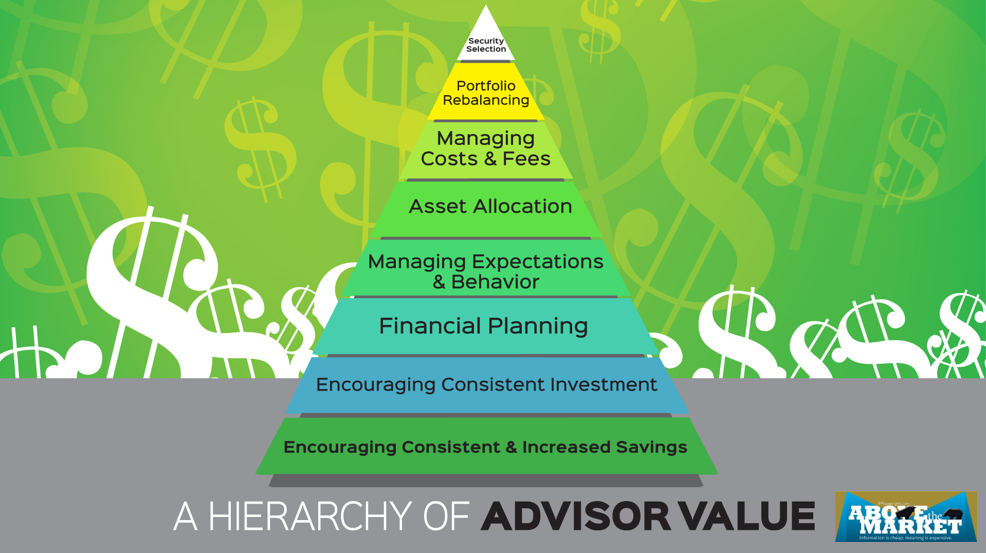
If you are considering working with a fee-only financial advisor, there are a few things to keep in mind before hiring one. First, you need to know the cost involved in working with a fee -only financial advisor. Fee-only advisors often charge a flat, hourly, or percentage of assets under management. Working with a fee-only advisor might be more expensive, but it is possible to get basic advice for a lower fee.
NAPFA is an online database of fee only financial advisors
Fee-Only financial advisers are professionals who chose to become members of NAPFA. The association promotes client-focused financial planning and professional competence. It was founded in 1982 by the Society of Independent Financial Advisors. They met in Atlanta to discuss the ethical problems associated with accepting commissions. NAPFA was founded by the group of individuals who recognized that putting clients’ interests first could lead to conflicts with their own financial goals.

NAPFA's fee-only financial advisor database includes many qualified financial planners that are eligible to work in the US. It has strict standards for its members. They must meet continuing education requirements and submit financial planning for peer review. NAPFA's members are required to work only in fee based structures. This reduces conflicts of interests and ensures financial planners act in clients' best interest.
Fee-only financial advisor: Costs
A flat fee is charged by fee-only financial advisors. It can run as high as $10,000 annually. While some advisors charge percentages of the assets managed, others charge a monthly or annual fee. While the fees for these subscription services are subject to change, they generally require a onetime fee for the initial start-up period as well as a monthly fee for support. Fee-only advisors may offer limited services such as reviews or annual meetings, or they may only be able to meet with clients one on one.
Fee-only advisers may charge flat rates for an initial plan. However fees can vary depending upon the level of experience and service provided. An initial comprehensive financial planning plan could cost from $1500 to $3,000 for the first year. A retainer rate, either a fee or a timed rate, is $1500 to $7500 per year. Fee-only advisors might charge a percentage of assets managed. This can vary from 1% to 22%.
The designations of professionals earned by fee-only advisors in the financial industry
Financial certifications (or professional designations) are proof of a person's knowledge and expertise in the field of financial services. The majority require hundreds upon hours of education and rigorous exams. Financial advisors who hold professional designations can be distinguished from those without them. The medical school certifications are proof that a professional has passed written examinations and been thoroughly vetted. Charles Sizemore is the chief investment officer at Dallas-based Sizemore Capital Management. He is also a certified financial planner and CLU. These are the highest standards for life insurance agents.

CFPs (Chartered Financial Consultants) are some of the most skilled and versatile types in financial advisory. CFP's can offer advice on virtually any financial matter, from taxation to retirement planning. CFPs must also adhere to strict fiduciary standards. Clients' interests are always considered first. The test requires applicants to complete a rigorous course load, pass an exam, and have at minimum three years experience in financial planning.
FAQ
What is retirement plan?
Financial planning does not include retirement planning. You can plan your retirement to ensure that you have a comfortable retirement.
Retirement planning is about looking at the many options available to one, such as investing in stocks and bonds, life insurance and tax-avantaged accounts.
How much do I have to pay for Retirement Planning
No. These services don't require you to pay anything. We offer free consultations to show you the possibilities and you can then decide if you want to continue our services.
What are some of the different types of investments that can be used to build wealth?
There are many types of investments that can be used to build wealth. Here are some examples:
-
Stocks & Bonds
-
Mutual Funds
-
Real Estate
-
Gold
-
Other Assets
Each has its benefits and drawbacks. For example, stocks and bonds are easy to understand and manage. However, they can fluctuate in their value over time and require active administration. On the other hand, real estate tends to hold its value better than other assets such as gold and mutual funds.
It comes down to choosing something that is right for you. The key to choosing the right investment is knowing your risk tolerance, how much income you require, and what your investment objectives are.
Once you've decided on what type of asset you would like to invest in, you can move forward and talk to a financial planner or wealth manager about choosing the right one for you.
Statistics
- Newer, fully-automated Roboadvisor platforms intended as wealth management tools for ordinary individuals often charge far less than 1% per year of AUM and come with low minimum account balances to get started. (investopedia.com)
- A recent survey of financial advisors finds the median advisory fee (up to $1 million AUM) is just around 1%.1 (investopedia.com)
- According to Indeed, the average salary for a wealth manager in the United States in 2022 was $79,395.6 (investopedia.com)
- US resident who opens a new IBKR Pro individual or joint account receives a 0.25% rate reduction on margin loans. (nerdwallet.com)
External Links
How To
How to Beat the Inflation by Investing
Inflation is one factor that can have a significant impact on your financial security. Over the last few years, inflation has been steadily increasing. Each country's inflation rate is different. India, for instance, has a much higher rate of inflation than China. This means that while you might have saved money, it may not be enough to meet your future needs. If you do not invest regularly, then you risk losing out on opportunities to earn more income. How do you deal with inflation?
Investing in stocks is one way to beat inflation. Stocks can offer a high return on your investment (ROI). These funds can also be used to buy real estate, gold, and silver. But there are some things that you must consider before investing in stocks.
First of all, you need to decide what type of stock market it is that you want. Do you prefer small-cap companies or large-cap companies? Then choose accordingly. Next, understand the nature of the stock market you are entering. Are you looking for growth stocks or values stocks? Make your decision. Finally, understand the risks associated with the type of stock market you choose. There are many types of stocks available in the stock markets today. Some are dangerous, others are safer. Choose wisely.
You should seek the advice of experts before you invest in stocks. They will tell you whether you are making the right choice. Make sure to diversify your portfolio, especially if investing in the stock exchanges. Diversifying can increase your chances for making a good profit. You run the risk losing everything if you only invest in one company.
If you still need help, then you can always consult a financial advisor. These experts will help you navigate the process of investing. They will help ensure that you choose the right stock. You will be able to get help from them regarding when to exit, depending on what your goals are.